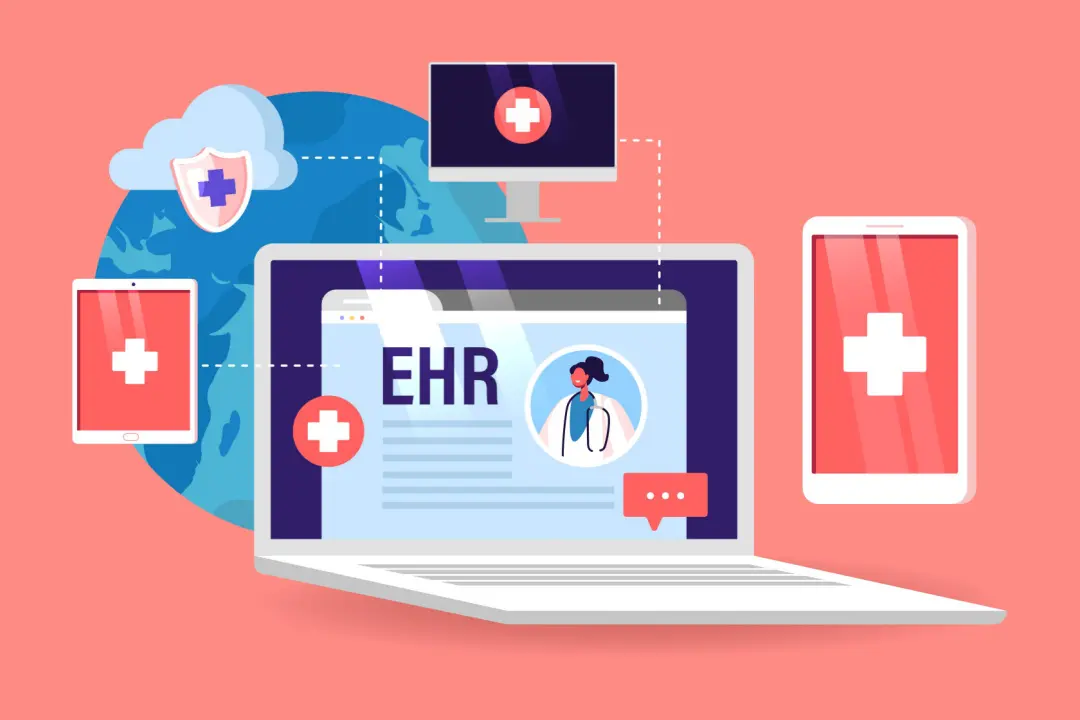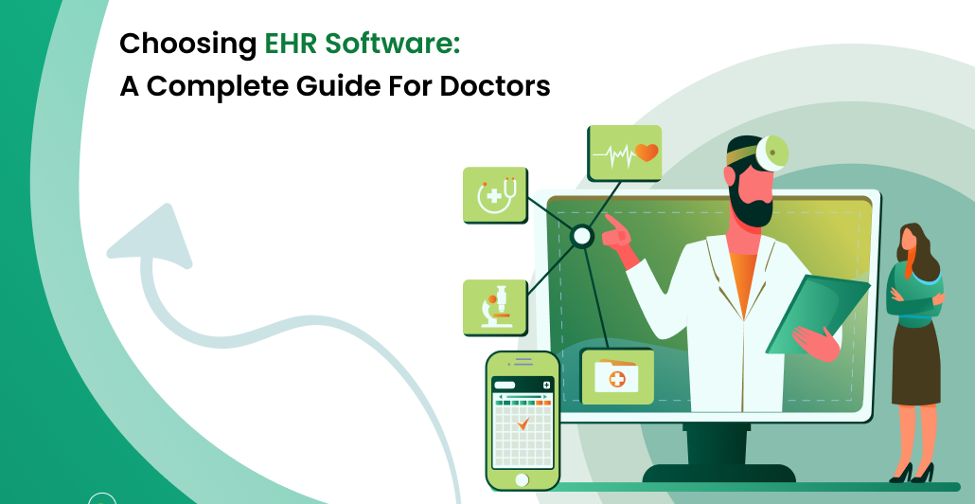Electronic Health Record (EHR) systems are the basis of today’s practice, incorporating patient care, documentation, and communication. With all the choices, it is overwhelming to choose the best platform for EHR software among physicians. The best system must be flexible to accommodate a practice’s workflow, specialty requirements, and regulatory requirements. A good choice is not only critical to productivity but also to optimizing patient outcomes and protecting information. This manual is designed to assist physicians in understanding the intricate process of selecting EHR software, from an in-depth review of features needed, modules needed, vendor selection, and implementation best practices.

Contents
What Is EHR Software?
An Electronic Health Record or EHR is an electronic copy of a patient’s paper chart with all the medical information in a usable and secure format. EHRs include histories, diagnoses, medications, treatment plans, dates of immunization, allergies, laboratory test results, etc. Compared to paper records, EHRs have and offer real-time access and availability to authorized clinicians for more coordination and efficiency. EHRs also offer decision-support tools, automation, and reporting. With integrated data, EHR systems offer improved quality care, fewer errors, and automated administrative tasks making it an essential part of healthcare delivery in the contemporary era for clinics and doctors.
EHR Software Features
Process improvement and maximizing patient care are all dependent on an appropriate choice of the most appropriate EHR Software. For a start, e-health record system software installation or upgrading, the following are items to look out for:
User-Friendly Interface
A simple and neat interface is the key to efficiency. The system needs to minimize clicks and enable documentation automation in order to support quicker charting.
Customizability
Each practice is different. Select EHR software with the ability to personalize workflow, templates, and dashboards to your work style and specialty.
Interoperability
Sharing of information with hospitals, pharmacies, laboratories, and other providers is required. Select electronic health record system software that is HL7, FHIR, and other industry-standard compliant.
Cloud-Based vs On-Premise
Cloud-based EMR Software development supports flexibility, reduced initial capital, and auto-updating. On-premise software offers control but at the cost of increased IT infrastructure expense.
Mobile Accessibility
Artificially intelligent EMR software needs to be mobile-enabled in order to enable physicians to access charts, update records, or prescribe remotely.
Voice Recognition & Dictation
Speech-to-text technology maximizes documentation speed and accuracy—perfect for busy practitioners with state-of-the-art EHR software.
Decision Support Tools
Clinical decision support technology with artificial intelligence identifies potential drug interactions, alerts out-of-range values, and offers evidence-based treatment recommendations.
Patient Engagement Tools
Patient portals for reviewing results, scheduling appointments, and interacting with clinicians improve satisfaction and decrease administrative workload.
By targeting these critical functions, physicians can choose EHR software that maximizes practice medicine, improves productivity, and keeps pace with emerging needs in EMR software design and AI-based EMR software systems.
Core EHR Software Modules
In analyzing what is EHR software, it is important to know the most vital modules which make it efficient. Looking for EHR software in India, Free EMR Software, or the Best EMR software for your clinic, these are the modules that make your system work for clinical and administrative operations:
Patient Registration
Saves patient demographics, insurance, and contact info—the foundation of any EHR software.
Scheduling
Schedules appointments, reminds automatically and minimizes no-shows, automates front-office functions.
Clinical Documentation
Enables doctors to document patient visits from templates, free text, or voice dictation. A must-have feature in any Best EMR software with clarity.
E-Prescribing (eRx)
Facilitates e-prescribing of medications, detection of drug interactions, and directly connects with pharmacies a standard of practice with EHR software these days in India and elsewhere in the world.
Lab Integration
Received electronically: lab orders and laboratory reports, to aid in diagnosis and treatment planning.
Billing & Revenue Cycle Management
Processes free and paid-for EHR solutions billing, coding, claims, insurance verification, follow-up on payments, and follow-up on payments.
Reporting & Analytics
Produces clinical, financial, and operational reports to aid in decision-making and practice effectiveness.
Patient Portal
Facilitates the visibility of medical records, appointment requests, and patient-secure messaging to providers.
These modules are the backbone of any Free EMR Software or premium solution. Choosing a system with comprehensive functionality ensures you’re investing in the Best EMR software for your practice’s long-term success.
Data Migration and Implementation
Successful implementation of top EHR software begins with smooth data migration from legacy systems. This critical phase ensures patient records, billing data, and clinical notes are accurately transferred. Installation with coordination with cross-training with a seasoned EHR software development company decreases downtime and ensures data consistency. Training staff within the framework of new workflow and system functionality is necessary to facilitate users to install and use EHR to maximum extent, e.g., enhanced efficiency, accuracy, and outcomes for patients. Properly planned installation prevents mistakes and downtime. In migrating from paper to EMR software or upgrade, a sound implementation plan is the recipe for long-term use and success.
Next Generation EHR Software Future Trends
The future of EHR software unwinds at warp speed driven by technology advances and changing healthcare needs. AI-Powered EMR Software, clinical decision support, automated documentation, and patient outcome prediction are a few of them. Cloud-based and mobile-platform interactive electronic health record system software also increasing, more handy and adaptable. Interoperability is also set to become better, easier data sharing across providers. Even Free EMR software now with elite features available that previously used to be available on pricey platforms. All these advancements make Best EMR software not just helps clinicians today but also prepared to fulfill requirements tomorrow.
Conclusion
Appropriate selection of EHR software is a highest priority that influences your practice quality and care level, as well as regulatory requirements. You can own EMR software at no cost, and you can even possess AI-based solutions. Physicians need to decide their individual specific requirements, specialty, and long-term plan. Understanding a need of a must-have capability, foundational modules, and a product road map to a next-generation solution obligates you to the solution that streamlines processes and enables improved patient outcomes. If you are converting from paper or replacing your existing electronic health record system software, the book helps you with the facts to make an educated, self-assured choice that delivers value in the long term.



